 Tech
Tech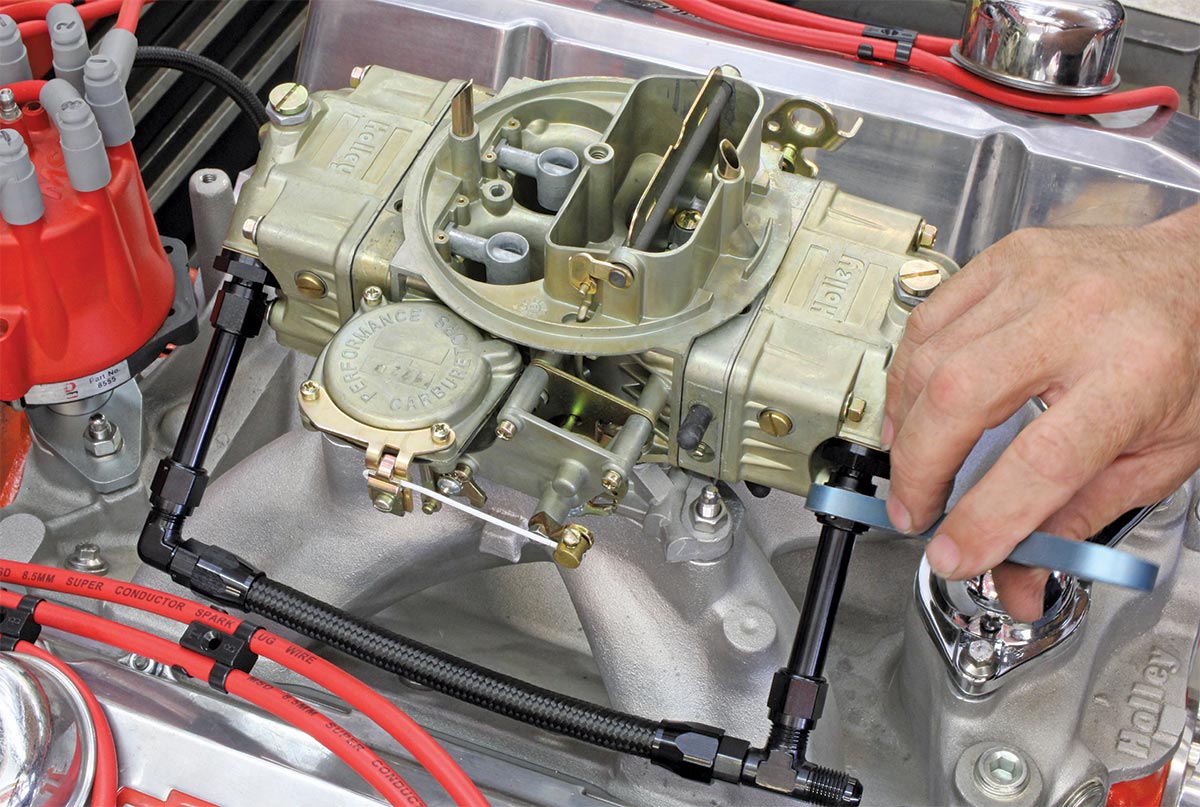
 TEXT & PHOTOS BY Jeff Smith
TEXT & PHOTOS BY Jeff Smithf we had to pick one Holley carburetor to represent the entire history of Holley carburetors, we would choose the 3310. It is the ubiquitous carburetor. Originally created as a 780-cfm vacuum secondary, four-barrel, original-equipment carburetor on many GM big-block engines, this carb has evolved into the go-to standard for street performance.
This carburetor became so in demand that Holley quickly began selling this carburetor first as a 4150 style, which includes a secondary metering block. Over the years, to attract an even broader clientele, the 0-3310 was converted to the 4160 version, meaning the secondary metering block was replaced with a metering plate but still with the same metering characteristics. Along the way, its rating slipped slightly to 750 cfm. There were a few other changes, but the demand continued.
Today, we’re looking at a current version 0-3310-13, which Holley calls the 0-3310-C or the classic version in the traditional gold dichromate finish. Buy one off the shelf and it comes as a dual inlet carb with a mechanical choke, two-hole idle circuit, straight-leg boosters, and no metering block. Or maybe you have one that’s been on your small-block for years and it’s time for a mild upgrade. We have just the plan.
The only real issue with the current 4160-style version 0-3310 is the rear metering plate. A couple of engine upgrades may require more secondary fuel, but the hassle is that the secondary metering plate uses fixed jets. The amount of fuel flowed by the secondary is determined by a pair of drilled orifices in the secondary plate. To change the jetting requires replacing the plate with one with a larger jet size. This is a hassle and quite expensive. But there is a simple solution.
Holley offers a conversion kit that replaces the 4160-style metering plate with a 4150 metering block that allows the secondary jets to be easily tuned (PN 34-13). This kit and all the other parts mentioned in this story are available through Speedway Motors. The kit includes a metering block, secondary jets, all the necessary gaskets, and longer screws to retain the secondary bowl. The conversion is very easy and can be accomplished in a few minutes. We’ll run through this process for you and offer a few hints and tuning tricks along the way.
One additional note is that if the carburetor is already on the car, the current dual-inlet fuel line will not bolt back on because the carburetor is now slightly longer, placing a greater distance between the dual inlet bowls. This will require a new fuel line. You can lengthen your current line, make a new one out of some Earl’s fittings, or just buy one of several fuel lines from Earl’s or other vendors.
It’s also worth noting that this same conversion can also be accomplished on the shiny version 0-3310S carbs as well as Holley also offers a similar metering block kit for that version carb. There’s also a kit to convert the popular 600-cfm 0-1850 Holley over to a metering block. The 600-cfm kits do not come with jets since they cover several different versions of 600-cfm 4160 Holleys. So those kits will require ordering separate secondary jets. The kit PNs are listed in the accompanying chart.
Besides this conversion, there are several other easy how-tos that can upgrade this basic carburetor. Holley offers an electric choke conversion as well as a Quick Change kit that slows easy changes to the vacuum Diaphragm spring. These are all bolt-on kits that are easy to install and will take your basic 0-3310 to the next level. Plus, there are all sorts of simple carburetor tuning tricks that you can do to fine-tune your carburetor to your particular engine.
But we’re getting ahead of the game. For the moment, let’s run through how to convert your 4160-style Holley 0-3310 to a much more competition-looking carburetor that will make it much easier to make a simple jet change.
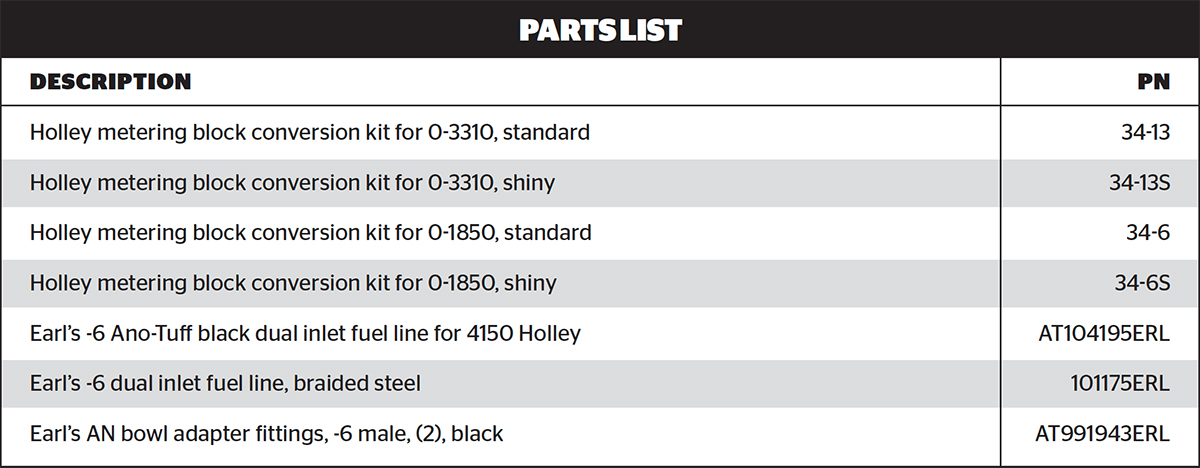
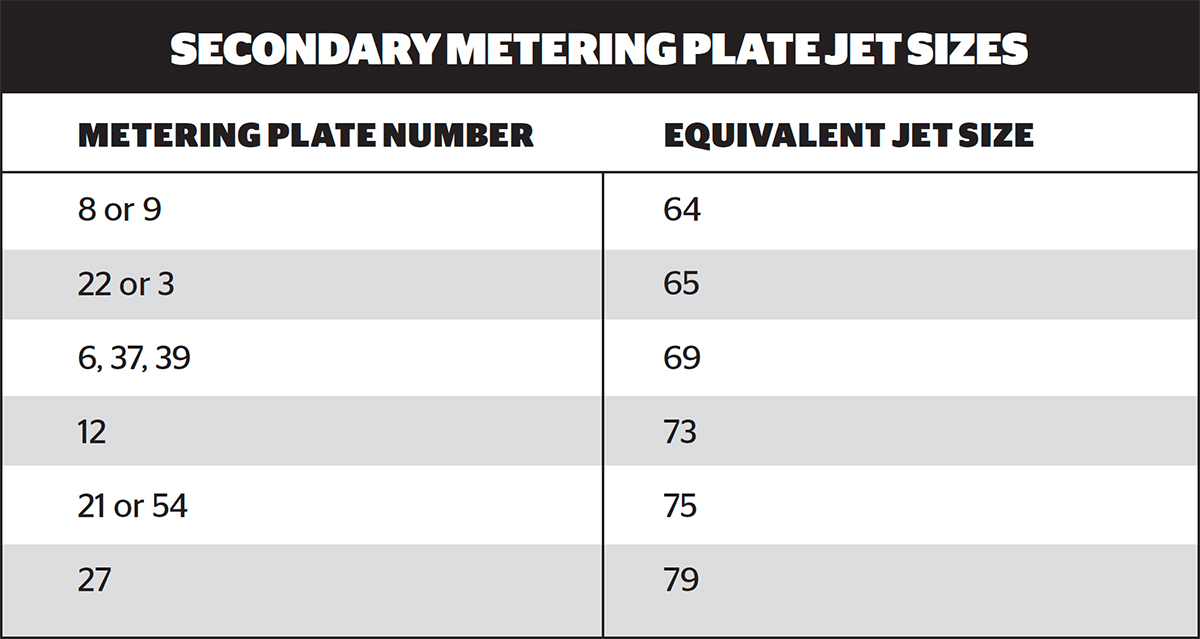
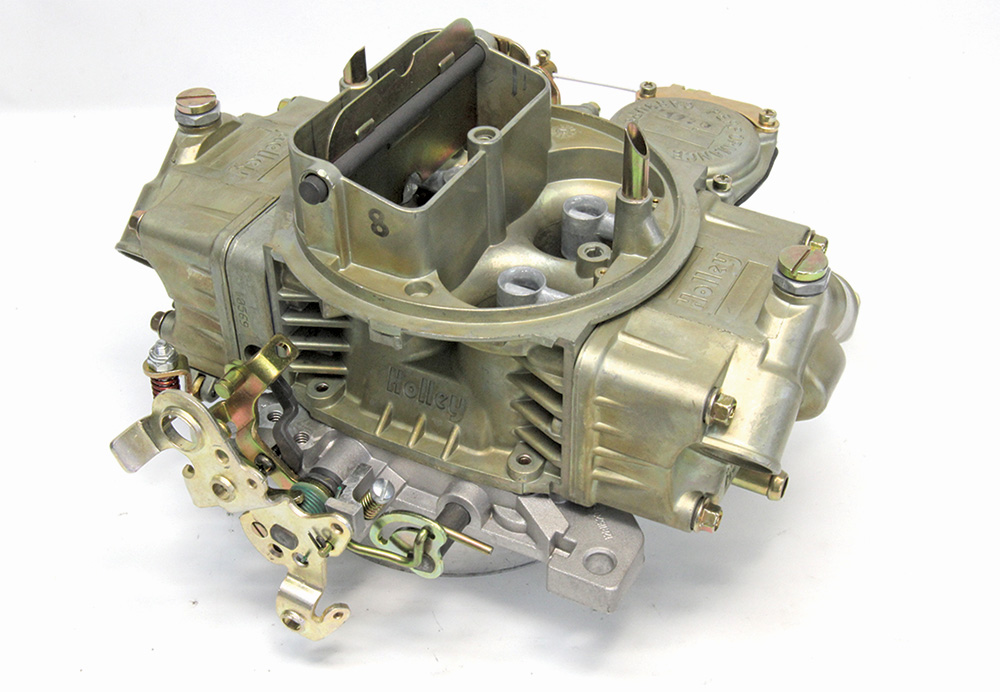
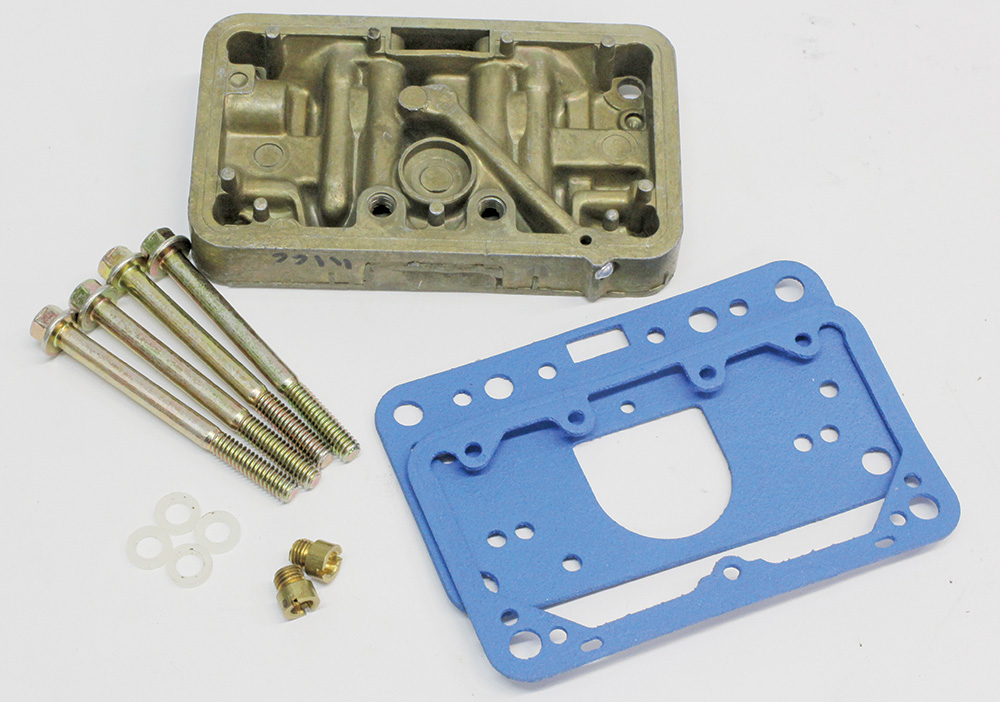
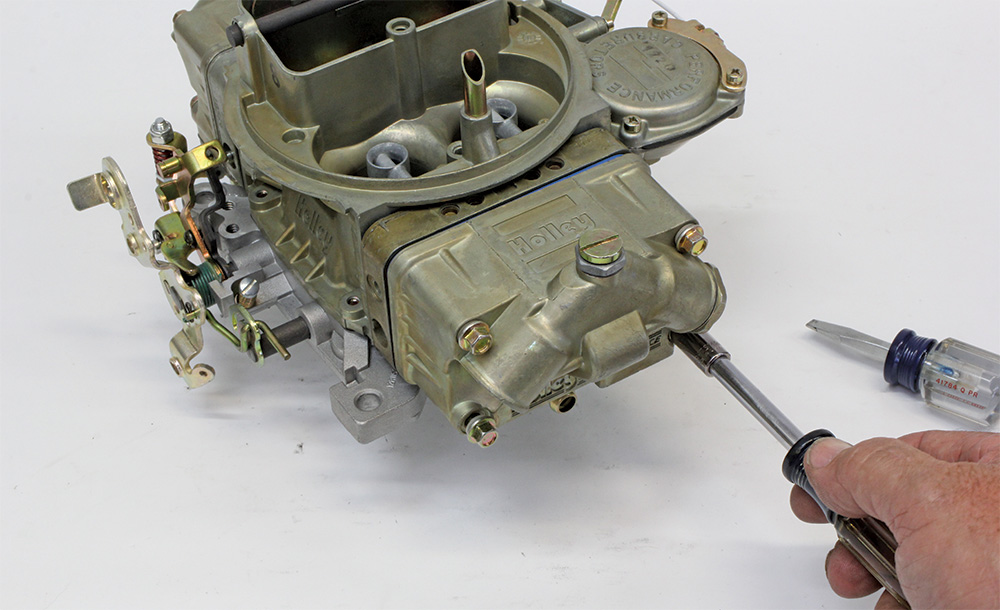
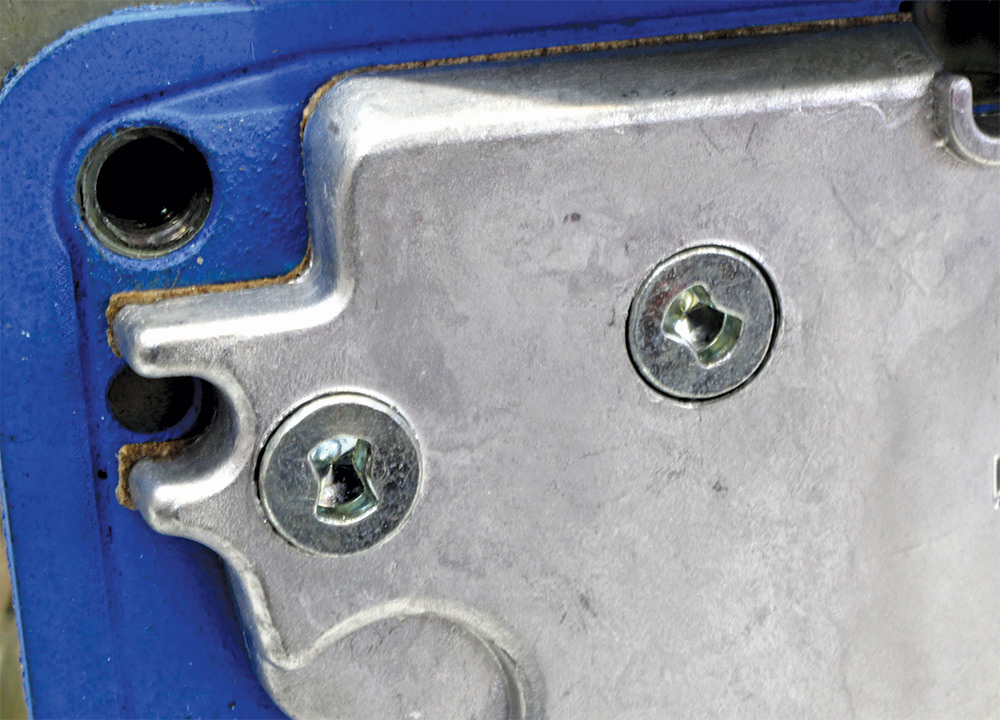
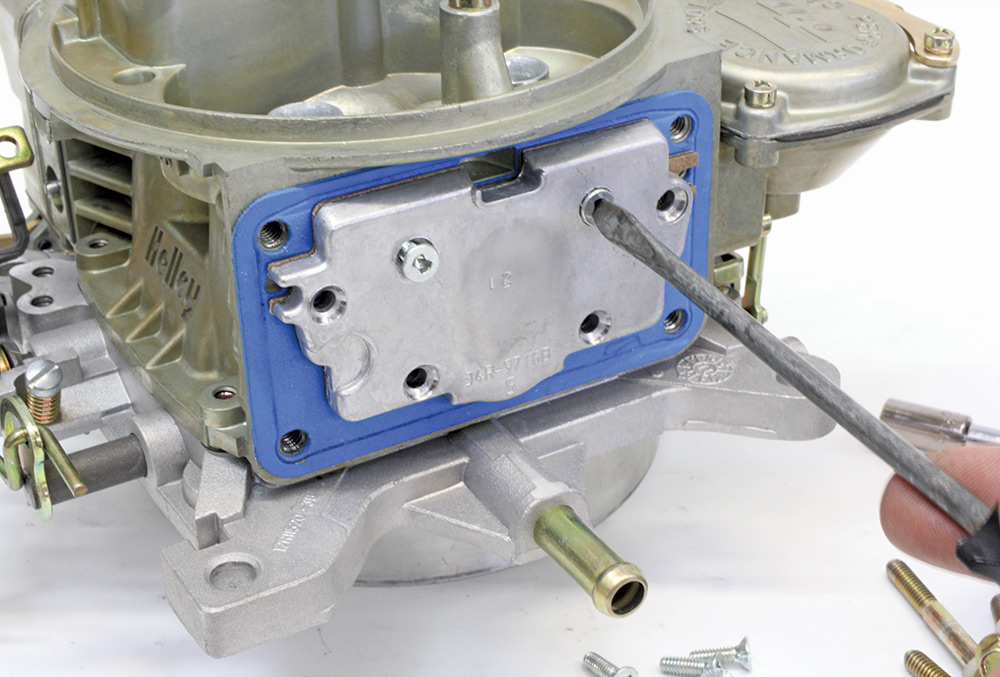

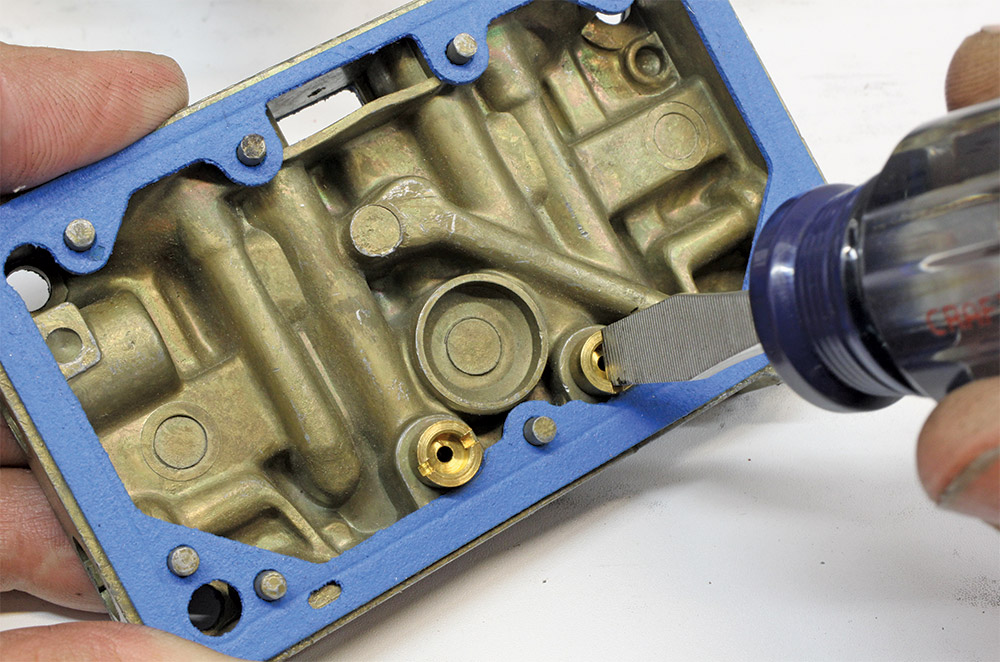
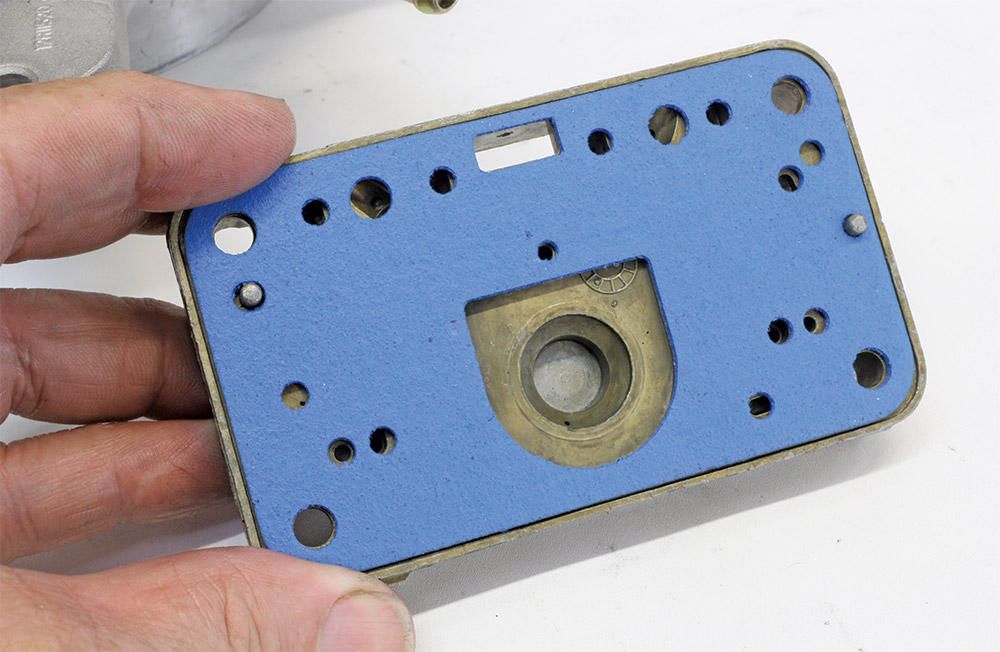
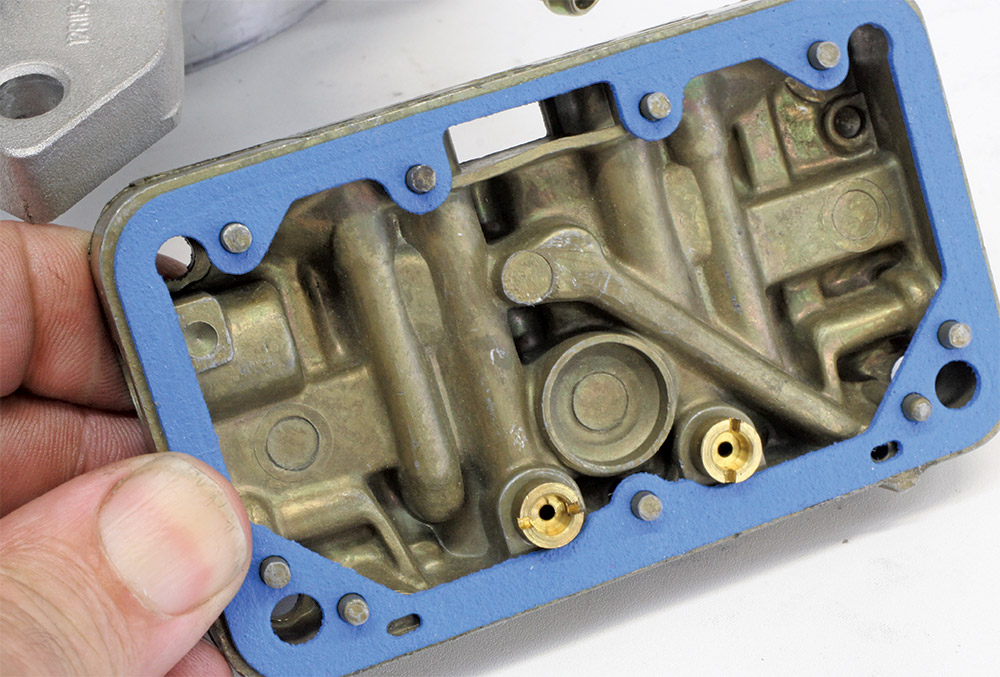
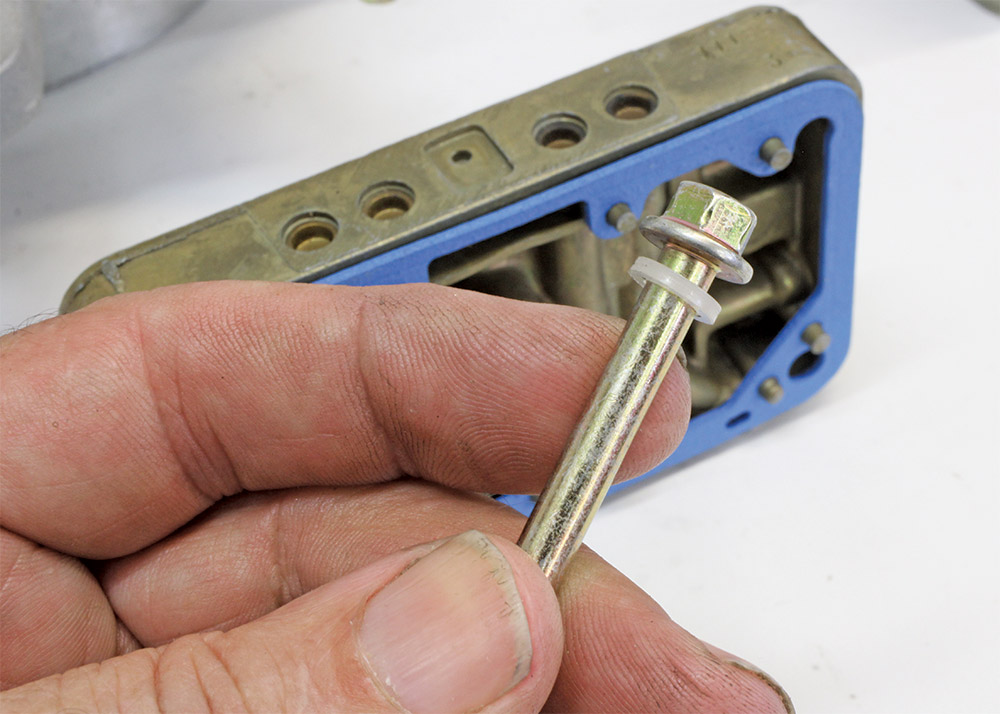
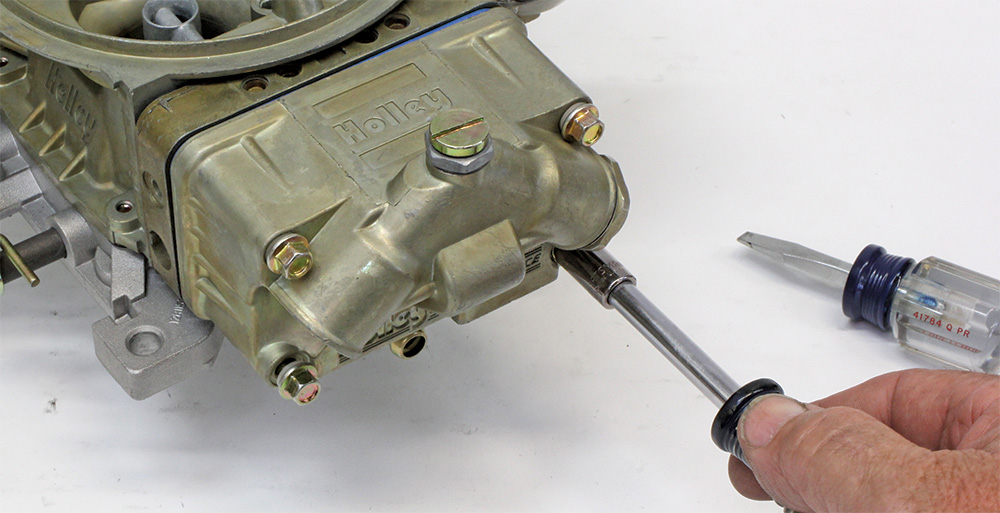
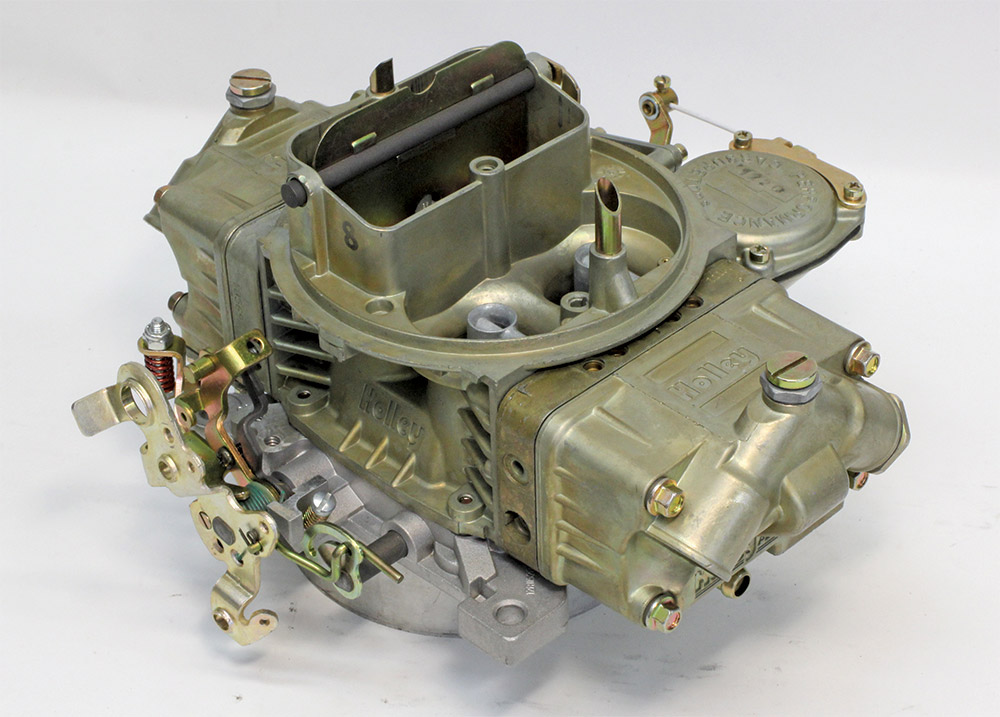

 SOURCES
SOURCES